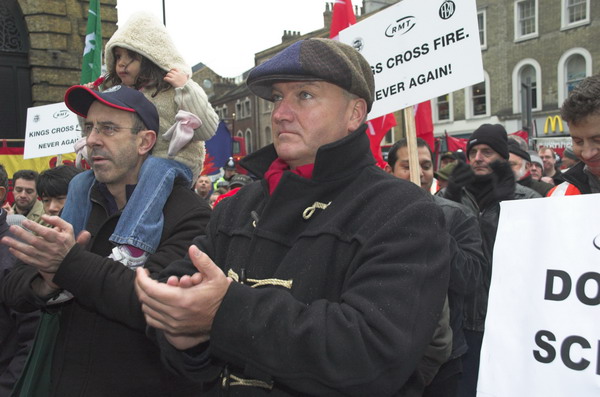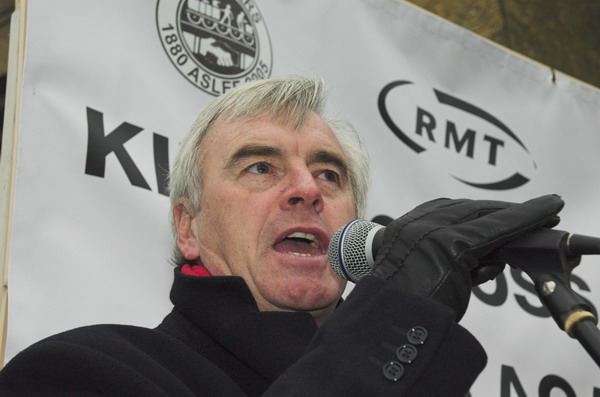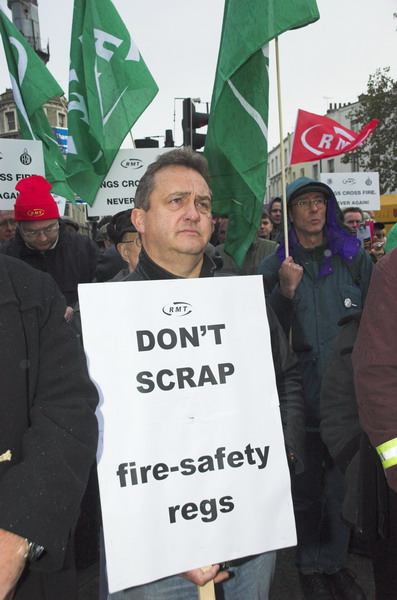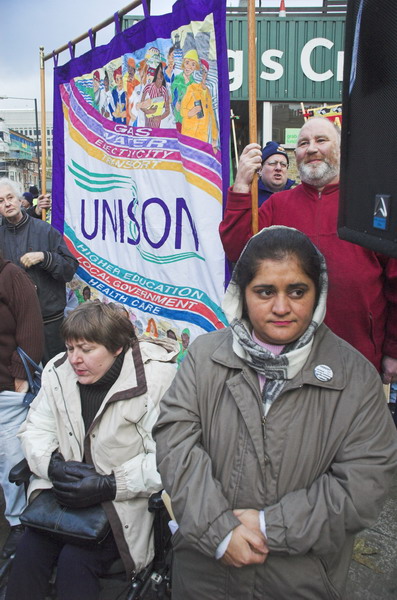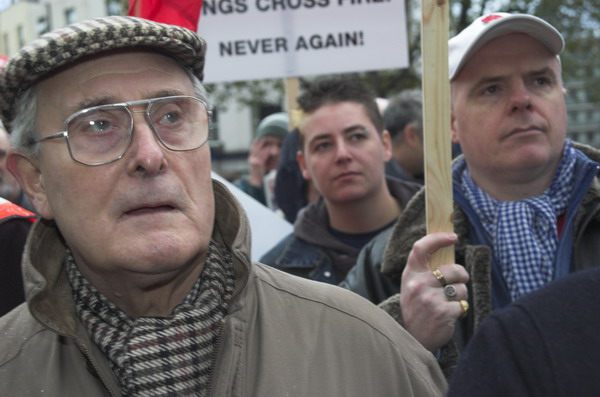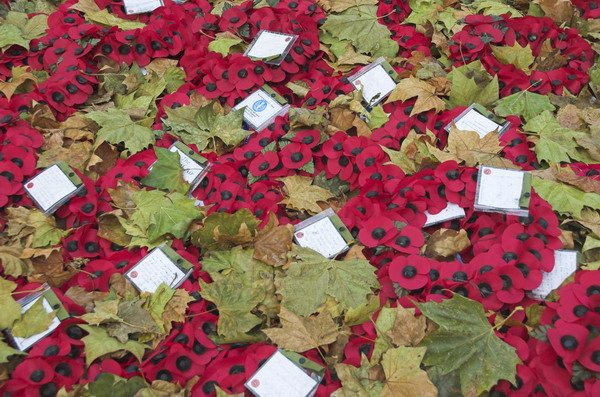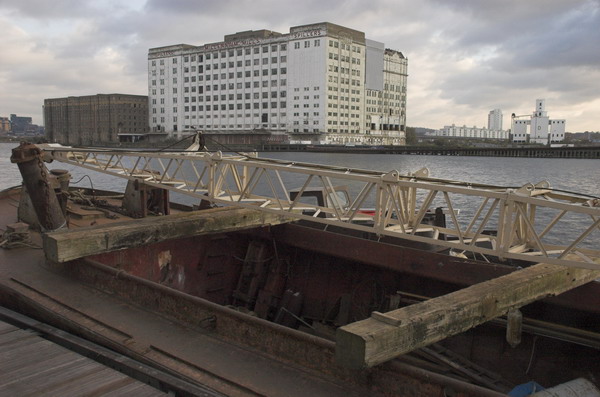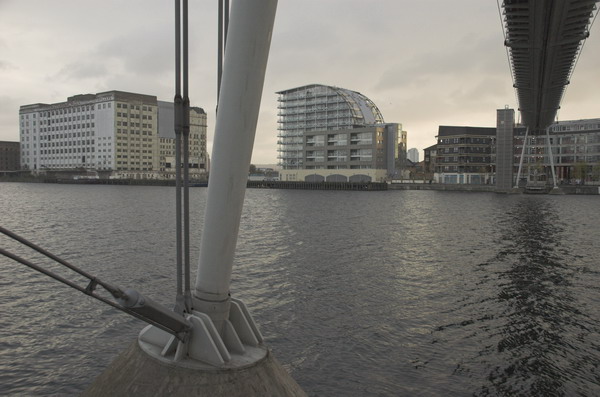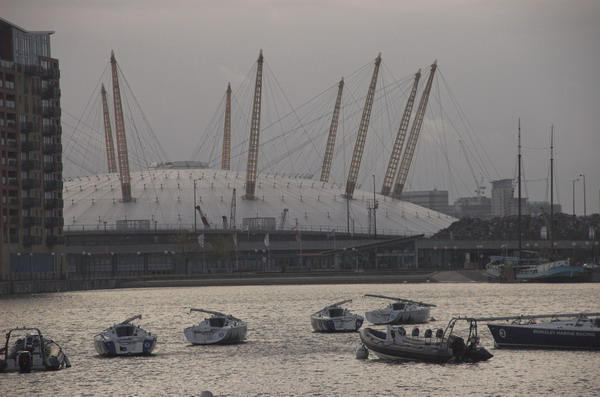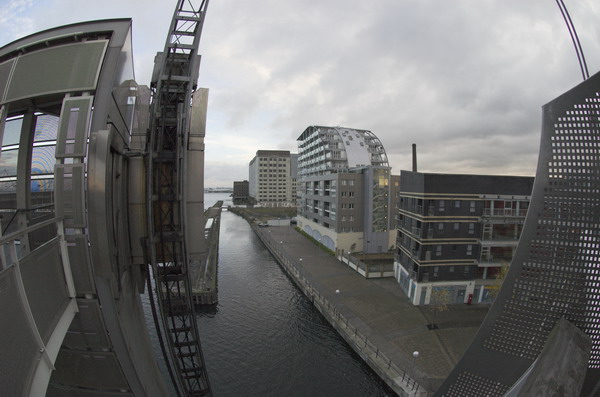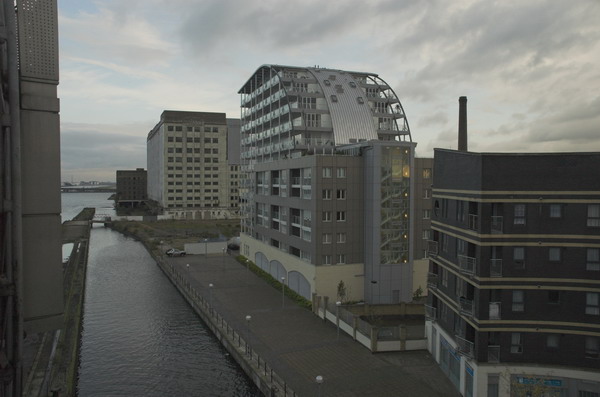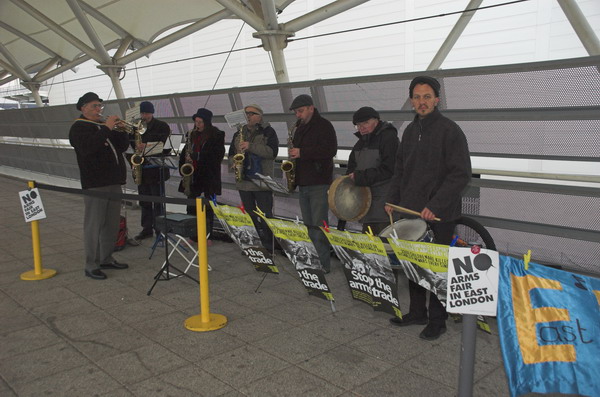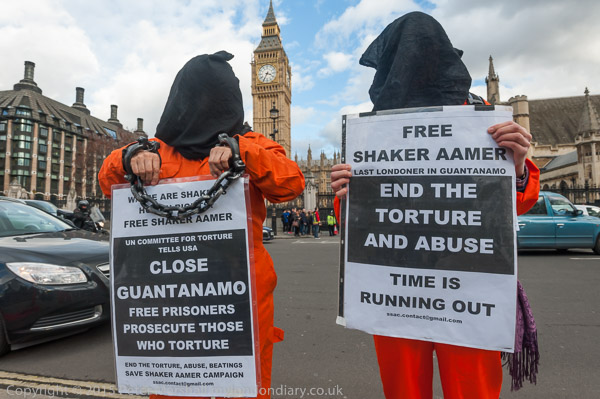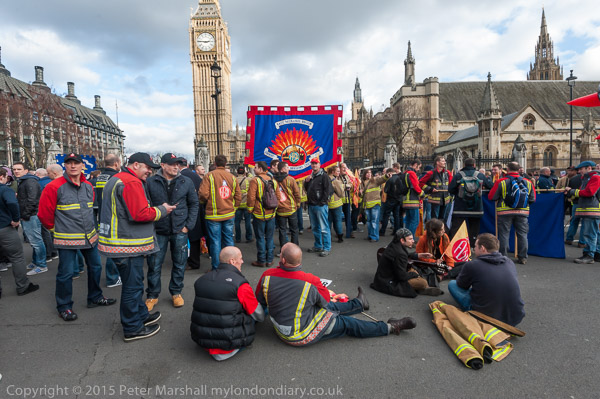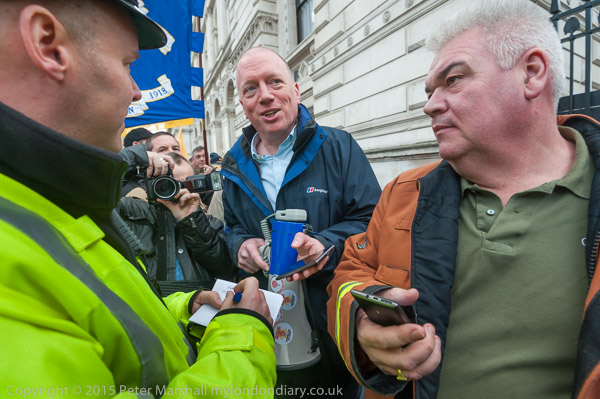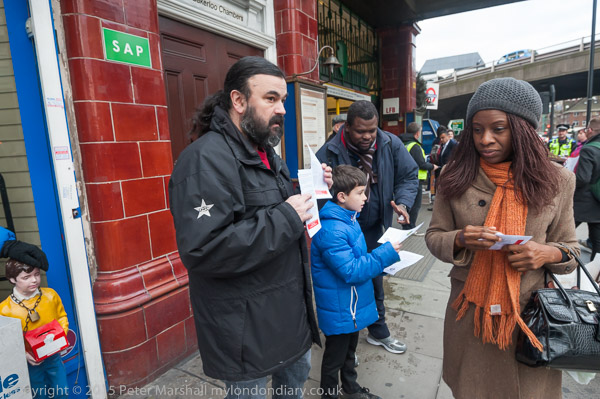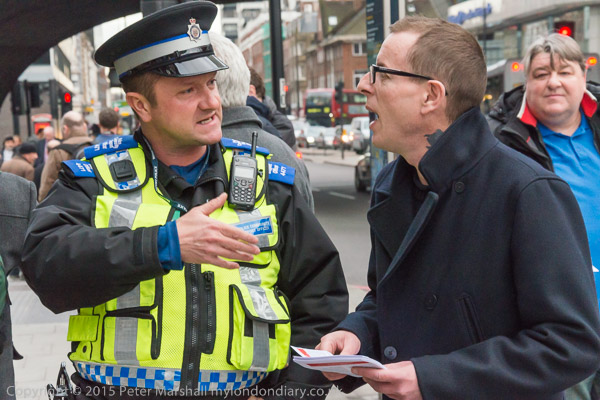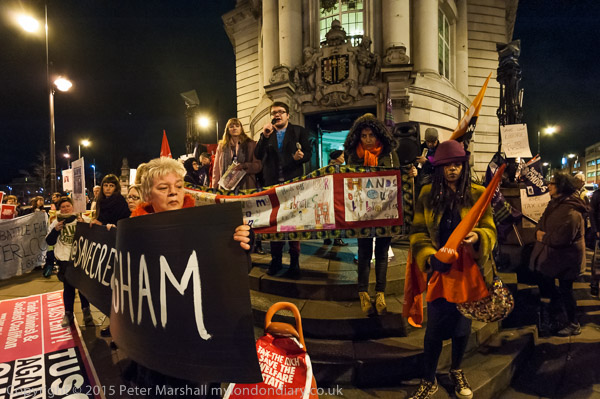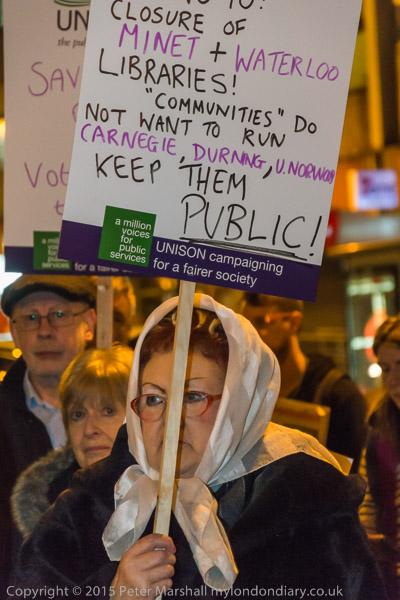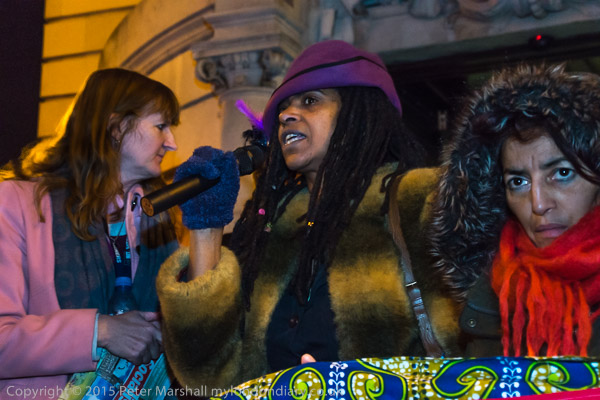Overground, Olympics and a Christmas Card: Like most of my posts on My London Diary before a redesign of the site in 2008, my contributions for Thursday 13th December 2007 are a little difficult to read and navigate, with the text separated from the pictures. But at least by then I had discovered the capital letters when I was writing about my activities. So I’ll repost them again after the introduction here.
On 13th December 2007 I began with a morning protest by the RMT union over the privatisation of the East London Line, previously run by London Transport. They wanted the line to remain run, like the Underground run by a publicly owned body – the Underground is run by London Underground Limited (LUL), a statutory corporation wholly owned by Transport for London (TfL).
Although TfL is still responsible for the Overground it is was until recently run by Arriva Rail London which was owned by the German national rail company Deutsche Bahn from 2010 until June 2024. It was then sold to I Squared Capital, a US-based private equity firm with global investments mainly in infrastructure. The Elizabeth line is run by a subsidiary of MTR Corporation, largely owned by the Hong Kong government.
Both Overground and the Elizabeth line have been considerable improvements to transport across London, but we can still question whether it makes sense to have so much of our infrastructure run by foreign companies – and so much land and buildings becoming owned by overseas investors.
The RMT protest ended shortly before noon and in the afternoon I walked from Stratford High Street to Hackney Wick past the Olympic area around Stratford Marsh.
RMT Protests East London Line Privatisation – City Hall, Southwark
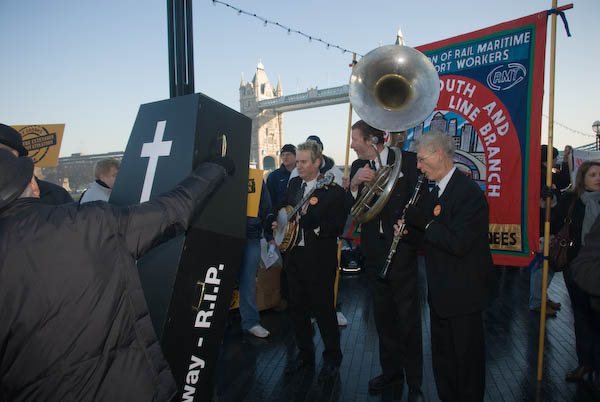
Improving our transport system in London should be good news, although the closure of the East London Line for almost three years from 22 Dec seems excessive (and of course the Shoreditch end has already been closed for some time.
Looked at on the map, the new overground routes, from Dalston (and later, Highbury and Islington) down to Crystal Palace and West Croydon (and perhaps eventually also to Clapham Junction) seem mainly a matter of connecting together existing routes, and adding a couple of new stations at Hoxton and Haggerston.
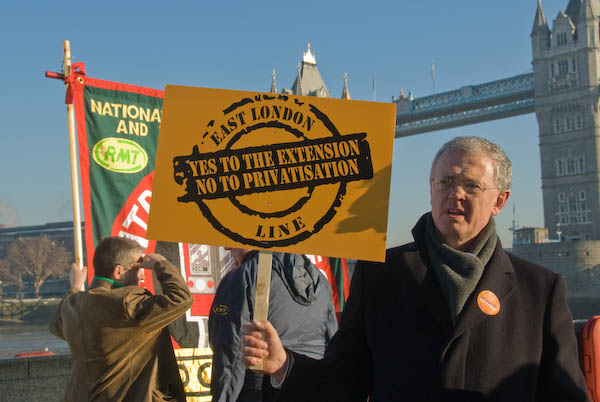
But what upsets the unions – and almost three-quarters of Londoners – is that when the line reopens after great public expense, it will have been privatised, paying profits to eight different companies for various aspects of its running – including some involved in the Metronet failure.
Part of those profits will come from paying staff less – and worse working conditions. The unions are also worried about possible safety problems as the signalling on the route will be shared between London Underground and Network Rail systems.

A hundred or so demonstrators from the RMT union, Respect and others marched around City Hall several times, led by a coffin for the line carried by ‘undertakers’ to represent the private contractors and a tuneful 3 piece jazz band, before a short rally.
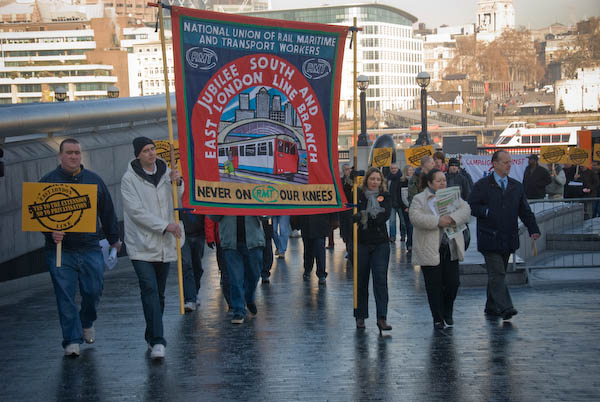
And although there are various replacement bus services during the years of closure, these leave a gap at the most essential part of the current route – across the Thames between Wapping and Rotherhithe. It is apparently beyond the wit of Transport for London to find buses that can use the Rotherhithe tunnel – or even provide a ferry service (the ferry downriver at Canary Wharf takes 3 minutes, but costs £1.90 if you have a travel card or over £500 for an annual season.)
Unless you bring your own canoe, the quickest alternative is probably to swim, though swallowing the water might be fatal. On the tube it takes one minute; the alternatives the TfL web site suggests on a weekday are mainly around an hour. Surely not acceptable.
More pictures at RMT Protests East London Line Privatisation
Stratford Marsh – Hackney Wick (2012 Olympic Site)

The ‘Greenway’ path on the top of London’s Northern Outfall Sewer reopened recently after a temporary closure during the nearby demolition works, and as it was a fine day I took a walk along it from Stratford to Hackney Wick.
Almost all of the buildings on the Olympic site have gone, with just occasional bits of wall or outbuildings left, and there are some pretty huge piles of earth or whatever. Gone too are most of the many trees, particularly the willows by Marshgate Lane and all the wild areas – as well as the tyre mountains and other car parts.
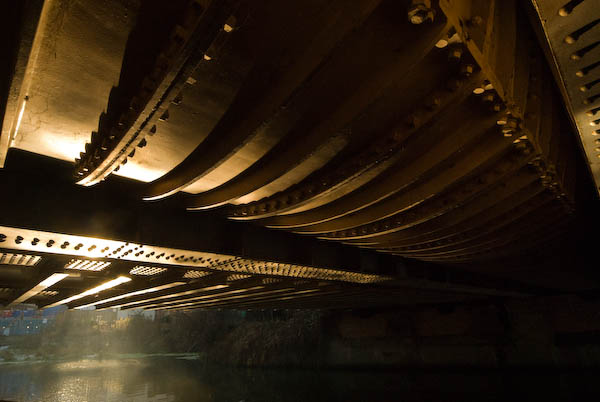
The light under the Northern outfall where it crosses the navigation was interesting, low sun bouncing up from the water and giving the structure a golden glow.
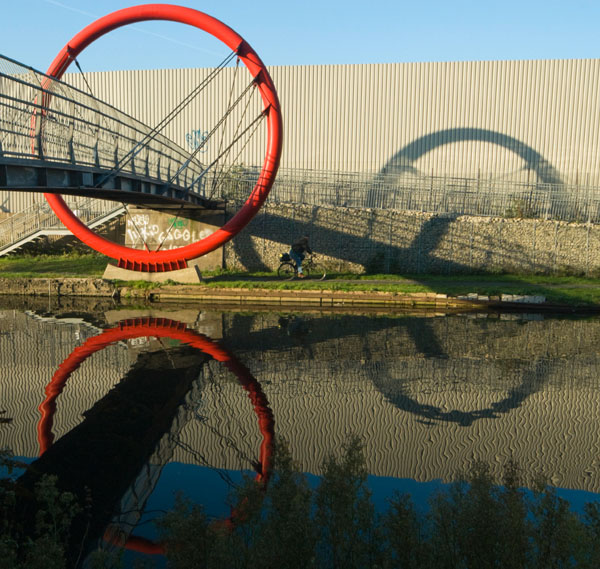
I went on over the lock at Old Ford to ‘Fish Island’ and then through the red circle footbridge to Hackney Wick, taking a few pictures from the station footbridge while waiting for the train back to Stratford. The line also gives some views of the vast building site.
Many more pictures at Stratford Marsh – Hackney Wick (Olympic Site).
My London Diary – Christmas Card – Tower Bridge
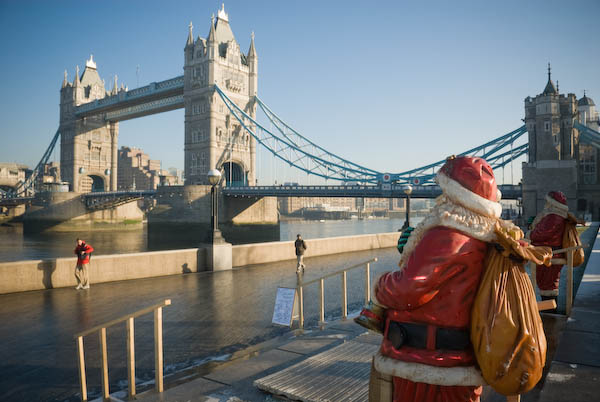
For once I’ve printed and sent my Christmas cards before the last date for posting, which is a pity, because if I’d waited I think the picture of two Santas at the Christmas Fair next to Tower Bridge [taken while waiting for the RMT protest to begin] would have made a good image. I think it’s the third figure in red at left of picture that really makes it work.
So this picture comes with my Christmas Greetings for all of you who visit the site.
I think I used this picture on my 2008 Christmas Card. I’m still trying to find a suitable picture for 2024.
Flickr – Facebook – My London Diary – Hull Photos – Lea Valley – Paris
London’s Industrial Heritage – London Photos
All photographs on this page are copyright © Peter Marshall.
Contact me to buy prints or licence to reproduce.
